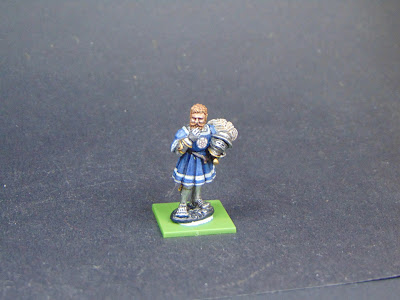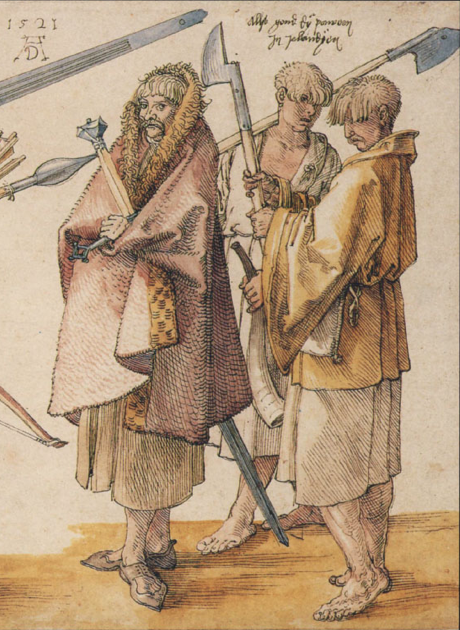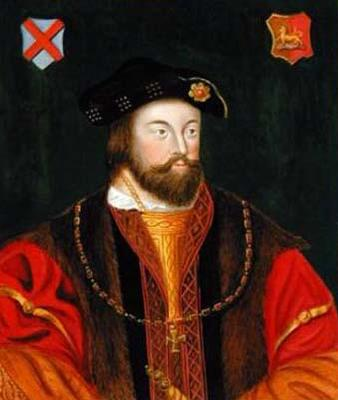Hi again, and Happy New Year!
Another Irish Update! I've decided to expand on the mounted command base I put together a couple of months back by putting together a few bases of light cavalry, to give a full unit of eight for Never Mind the Billhooks' rules.
As with the command base, unfortunately it's pretty difficult to find figures to actually represent the Irish cavalry of the 15th and 16th centuries, so that meant it was time to go to the conversion table to put some together!
This post by Oli has been an absolute lifesaver in terms of the research involved and for design ideas, so I highly recommend checking it out! http://camisado1500s.blogspot.com/2018/02/irish-chieftan-and-noble-cavalry.html
Based on Oli's post, I decided to use two main visual references when planning out the figures, The Image of Irelande and the Book of the Burkes. In particular, plate 9 of The Image of Irelande shows a fight between Irish cavalry and their English counterparts:
This image has a few interesting features, where some of the Irish cavalry have some unusual segmented helmets, and almost all of them have large round shields, but they're being worn either on their chests or tied to their backs. The English cavalry in the same illustration also have their shields tied to their chests, so this might just be artistic license by the artist though
In the Book of the Burkes, there's also a helpful illustration of an Anglo-Irish cavalryman (which Oli also cites). This one is slightly different to the ones in The Image of Irelande where the cavalryman has a long shirt which extends past his mail, and a pointed bascinet-style helmet
According to Seán Ó Domhnaill in Warfare in Sixteenth-Century Ireland, the Irish horse "were armed with headpeaces, shirtes of mayle or jackes, a sword, a skayne (a short-sword) and a speare." Ó Domhnaill also confirms that the Irish cavalry did not use stirrups, used a unique type of saddle, and held their spears overarm to thrust. This supports the illustrations in the other sources, so I thought that gave a solid foundation to go from!
So with that in mind, I needed to find figures which:
- (Mostly) had period-appropriate mail shirts
- Had overarm poses for their spears
- Could scale visually with the Perry War of the Roses range
In the end I settled on the Perry Norman sculpts, to make sure they scaled correctly, and thankfully they had a pack of overarm spear users too! Once that was settled, I trimmed down their mail shirts to be much shorter, in line with other 15th/16th century designs, and swapped their heads for Perry Irish ones
This base had a figure I based explicitly on the illustration in The Book of the Burkes, with the long white shirt, red leggings and pointed bascinet
And finally I wanted to have a go sculpting one of those odd segmented helmets on one of the figures, so I added one to the final base here
And finally here's a few pictures of the whole bunch together
Hopefully they've turned out ok!


















































